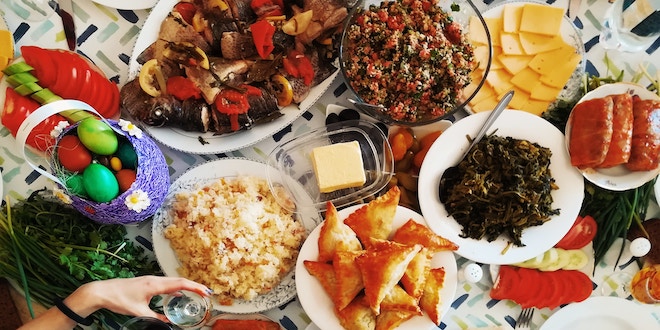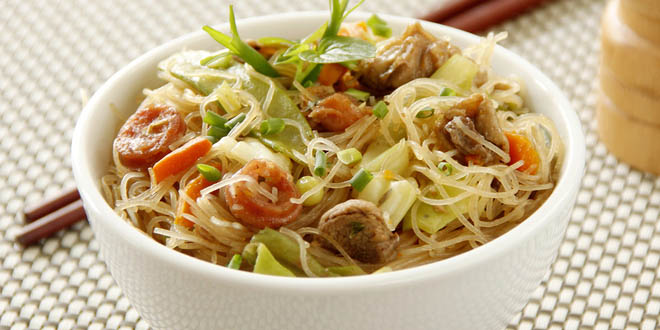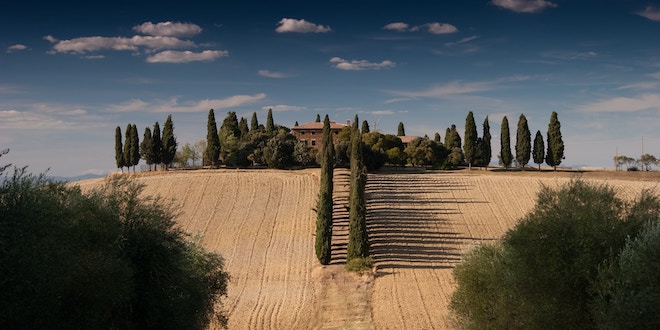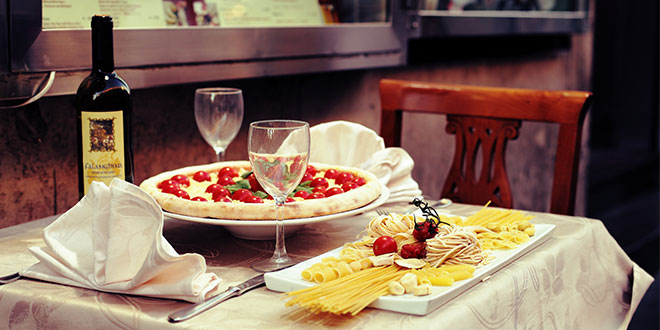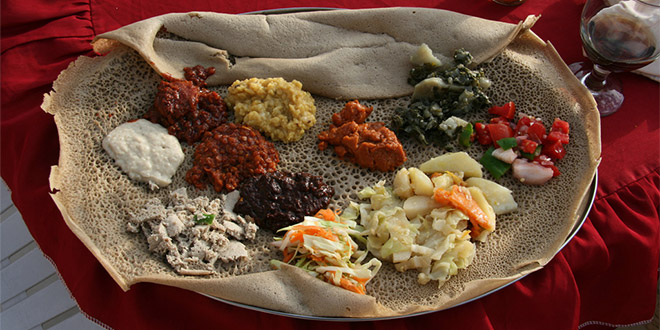The Ultimate Culinary Journey through Armenia
Last Updated on October 12, 2023
Armenia, a land of stunning landscapes and ancient history, also beckons to the gastronomically inclined traveler. With a rich tapestry of flavors, it’s no wonder that Armenia is increasingly becoming a go-to destination for food enthusiasts. Its cuisine is as diverse as its culture, thanks to the influences of both Western and Eastern Armenians. When embarking on a gastronomic adventure through Armenia, you’ll encounter an intriguing blend of flavors, each with its own unique story to tell. So take a break from playing roulette casino online and learn about this underrated foodie destination.
Eastern Armenian Cuisine: A Soviet Aura
Eastern Armenian cuisine, steeped in history and influenced by a complex past, is a testament to the enduring legacy of the Soviet era. This branch of Armenian culinary tradition offers a unique and distinct flavor profile that sets it apart from its Western counterpart. When you embark on a culinary journey through Eastern Armenia, you’re not just savoring food; you’re exploring the echoes of a bygone era, where every dish tells a story of resilience and heritage.
The foundation of Eastern Armenian cuisine was shaped by the turbulent history of the region. In the early 20th century, Armenia fell under Soviet rule, which had a profound impact on the country’s culinary landscape. Soviet influence introduced new elements to the Eastern Armenian kitchen, resulting in a blend of traditional Armenian flavors with the pragmatism and resourcefulness that characterized Soviet cuisine.
Western Armenian Cuisine: A Middle Eastern Touch
In Western Armenia, the cuisine unfolds as a captivating blend of flavors influenced by the Middle East. This region’s culinary journey is a testament to the enduring spirit of a people who, despite facing one of the darkest chapters in history, have preserved their heritage through the art of cooking. The distinct Middle Eastern touch in Western Armenian cuisine is not just a matter of taste but also a reflection of a painful historical legacy.
To truly understand the Middle Eastern influence in Western Armenian cuisine, we must acknowledge the Armenian Genocide. This tragic event, which occurred during the early 20th century, forced the displacement and mass exodus of millions of Armenians from their ancestral homeland in Eastern Anatolia, present-day Turkey. This dark chapter in history had profound implications on Armenian culture and cuisine.
Despite the overwhelming challenges faced by the Armenian people, they carried with them the memory of their culinary traditions as they sought refuge in different parts of the world, particularly the Middle East. In the face of adversity, Western Armenian cuisine emerged as a symbol of resilience, preserving the flavors of their homeland while incorporating the culinary influences of their new surroundings.
1. Manti
Manti, these delicate dumplings filled with seasoned minced meat, represent a culinary treasure in Western Armenian cuisine. They are not just a dish but a testimony to the rich tapestry of influences that have shaped the region’s culinary heritage. These small, flavorful parcels encapsulate the essence of Armenia’s history, with hints of Central Asian influence and the warmth of communal traditions.
Manti’s charm lies in the harmonious blend of flavors within each tiny parcel. The filling, typically composed of finely minced meat and a medley of aromatic spices, creates a symphony of tastes that dance on the taste buds. This combination reflects the influence of Central Asian cuisines that have touched Armenian cooking over the centuries.
The process of making manti is a social event, with multiple hands working in harmony to craft these miniature masterpieces. This tradition of communal preparation not only imparts a special flavor to the dumplings but also fosters a sense of togetherness and shared culture.
2. Khash
Khash, a traditional Armenian dish, is more than just food; it’s a window into the heart and soul of Eastern Armenia. This hearty delicacy may raise eyebrows due to its unconventional ingredients, as it’s primarily made from boiled cow’s feet. However, within this seeming eccentricity lies a culinary treasure that tells a profound story of resilience, tradition, and camaraderie.
At first glance, Khash might appear unorthodox to those unfamiliar with Armenian cuisine. The dish consists of cow’s feet, typically the lower legs and hooves, simmered for hours until the meat becomes tender and the broth rich and gelatinous. While some might initially find it unusual, Khash is regarded as a delicacy in Eastern Armenia, where it is traditionally enjoyed in the early morning hours.
Part of what makes Khash special is the time-honored tradition associated with it. It is not just a meal; it’s a communal experience. Families and friends gather around the table to share this dish, often accompanied by vodka and garlic. Khash breakfasts are not mere gatherings; they are celebrations of the resilient spirit of Eastern Armenia. The early morning setting serves as a reminder of the region’s challenging climate, and the hearty meal provides sustenance for the day ahead.
3. Ghapama
Ghapama, a beloved dish in Western Armenian cuisine, is a culinary masterpiece that harmoniously blends sweet and savory flavors. It’s a celebration of the ingenuity and creativity of the Armenian people in preserving their culinary heritage while embracing the Middle Eastern influences that have enriched their cuisine.
The dish consists of a whole pumpkin, skillfully hollowed out and stuffed with a captivating mixture. Ghapama’s essence lies in the balance between sweet and savory, a unique feature that distinguishes it within Armenian cuisine.
The heart of Ghapama is its filling, which includes rice, dried fruits, nuts, and honey. This combination creates a harmonious symphony of flavors. The sweetness of the dried fruits and honey complements the nuttiness of the filling, while the pumpkin’s natural earthiness provides a delightful backdrop. The contrast of sweet and savory elements mirrors the essence of Middle Eastern cuisine, which often incorporates such balance in its dishes.
4. Dolma
Dolma involves the meticulous art of stuffing grape leaves or vegetables with a flavorful mixture of ground meat, rice, and aromatic herbs. Dolma is not just a culinary creation; it’s a masterpiece that reflects the Middle Eastern touch that was woven into the fabric of Western Armenian cuisine during times of exile and uncertainty.
Creating Dolma is a meticulous process that requires precision and patience. Grape leaves or vegetables such as bell peppers, zucchinis, or eggplants are chosen as the outer vessels for the stuffing. The meat and rice mixture, seasoned with a symphony of aromatic herbs like mint, dill, and parsley, is carefully prepared and then used to fill the grape leaves or vegetables. This intricate procedure turns each dolma into a culinary work of art.
The distinct Middle Eastern touch is evident in the flavors and techniques used in making Dolma. The combination of meat, rice, and herbs resonates with the traditional tastes of Middle Eastern cuisine, where stuffed dishes are prevalent. The influence of Middle Eastern cooking is seen not just in the ingredients but also in the sense of balance and harmony between various flavors and textures.
5. Lavash
Lavash is a symbol of identity and an integral part of the cultural and culinary heritage of the Armenian people. This humble bread, more than just a vessel for food, carries profound significance and reflects the enduring spirit of the Armenian community.
Its simplicity and versatility make it the ideal accompaniment to a wide range of dishes. Whether it’s used to wrap meats, scoop up dips, or simply as a side, Lavash’s ability to complement and enhance the flavors of Armenian cuisine is unparalleled.
The process of making Lavash is a labor of love that requires skill and dedication. The dough, made from basic ingredients like flour, water, and salt, is rolled out into thin sheets and baked on the walls of a clay oven. This method of preparation has been used for centuries and reflects the resourcefulness and craftsmanship of the Armenian people.
Lavash is often central to cultural celebrations and rituals. It’s not uncommon to find Lavash used in various traditions, from wedding ceremonies to religious feasts. Its presence at such events underlines its cultural significance and its role in bringing people together.
Key Takeaways
Armenia, with its breathtaking landscapes and rich history, is also a paradise for food enthusiasts. Its diverse cuisine is a reflection of the country’s cultural tapestry, where both Eastern and Western Armenian influences have shaped an array of unique flavors.
The cuisine not only tantalizes the taste buds but also provides a deeper understanding of the country’s history, resilience, and the warmth of its people. So, when you explore Armenia’s culinary wonders, you’re not just savoring dishes; you’re experiencing the story of a nation that has triumphed through adversity, one delightful bite at a time.

